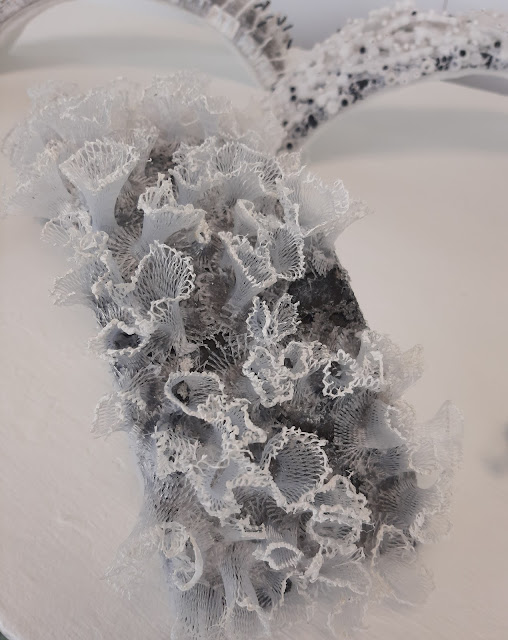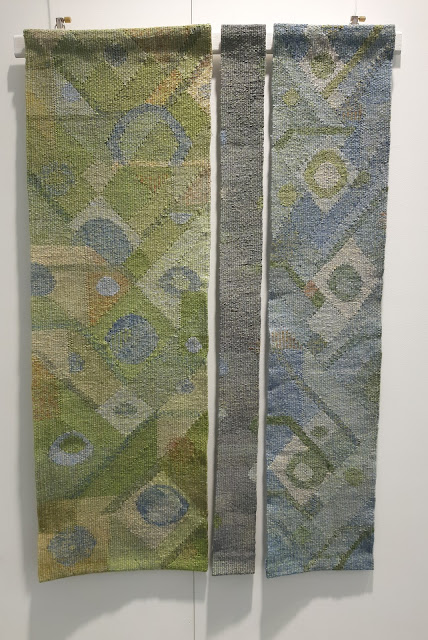An elbow's length of thread
My happy place for all things stitch and textile. You can also find me in more musing mode, at "Of Gardens, Grandmothers and Gleanings"
Wednesday, 1 January 2025
Christmas "gods"
Monday, 23 September 2024
Quilt Planning
I am having a bit if fun planning the next quilt for my husband's next great grandson. His sister has given him a name, we're not sure it has parental approval! I won't publish it here.
And here is the mouse, friend of fox, owl, rabbit and hedgehog on the other two quilts. Perhaps they will all play with each other again one day.
Sunday, 25 August 2024
Absent but busy
It really has been rather a long time since I posted, but I am still here, just been rather busy.
A dear aunt of mine, the last of my paternal aunts, died in April and, as one of two executors, but the one closest to her both geographically and emotionally, I have been dealing with her estate, which is taking some considerable time. I have still been stitching, just not had the energy to post here about what I was doing. I did have a break from this in June when I went with Stitchtopia to Indonesia for two weeks; a fascinating tour, rather spoilt by going down with Covid as soon as I got back. I am still contemplating what I thought of the trip, but will try and post in the other place once my ruminations are done.
My priorities have been twofold; first getting the stitching finished for my part in the lovely book we made to celebrate the life of Christine Chester. This was entered into the Quilt Creations Gallery at FOQ this year, where it garnered much enthusiasm and comment, including from the delightful John J Cole-Morgan of IQuilt Studio who featured it in his live feed on Facebook, calling it “one of the most stunning pieces at Festival”. Liz did us proud in talking about it, having been caught completely on the hop! You'll see a couple of brief glimpses of my finished piece, Moonflowers, as they flick through the book, but also so many of the other lovely artworks which our Studio11+ group created in Christine's memory. I also had the honour of stewarding at Christine’s retrospective gallery. It was such a pleasure to talk to folk about her work, and see how many visitors were deeply touched by the message behind her pieces. One of my favourites is this beautiful sheer image of her Dad using English Paper Piecing and fabrics she created herself using voile and paper lamination (here demonstrated by Claire Benn from whom I suspect Christine learnt the technique she made her own). Don't you just love those echoing shadows on the wall?
My second priority has been making a small floor quilt to welcome the latest great grandchild in my husband’s family. He was born on June 1st and I have just completed the finishing touches. Summer suns and little creatures to greet a summer baby, a couple drawn from his cousin's quilt to create a family link, along with a rabbit and fox to talk to, some mad cats dancing with the birds, and lions and tigers contemplating the fluttering butterflies. It will be given to his parents in late September when we are all meeting up during our annual pilgrimage to the Lakes.
Saturday, 11 May 2024
Designing a series from scraps
Saturday, 27 April 2024
Edgelands from Prism
Jane Riley’s tapestry, "The Fortress Cliffs" was inspired by the cliffs at Ravenscar North Yorkshire. I thought her use of differing textures of thread and eccentric weave created a real sense of standing at the edge, looking out, and expressed her hope for the continuing recovery of this space from its industrial past.

















































